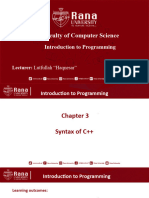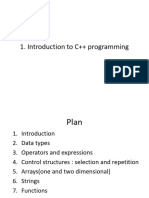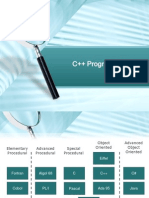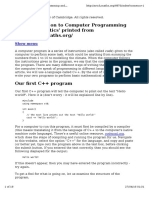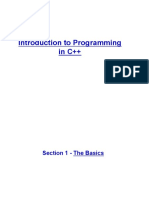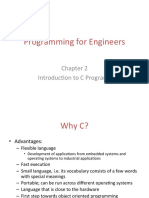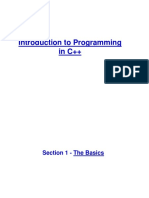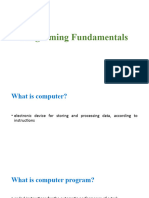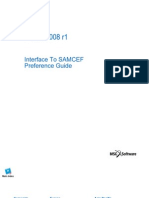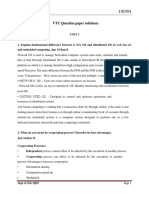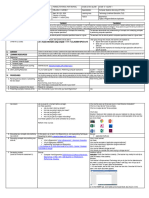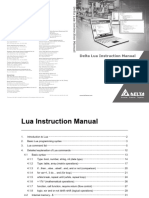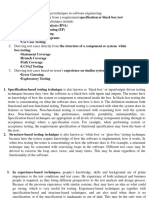0% found this document useful (0 votes)
32 views51 pagesIntroduction To Programming
The document outlines a course on Introduction to Programming, covering essential topics such as programming languages, algorithms, data types, and good programming practices. It details the course structure, grading policy, required textbooks, and programming basics including operators and error types. Additionally, it provides insights into IDEs, program writing, and sample code for practical understanding.
Uploaded by
oabile.tubutubuCopyright
© © All Rights Reserved
We take content rights seriously. If you suspect this is your content, claim it here.
Available Formats
Download as PDF, TXT or read online on Scribd
0% found this document useful (0 votes)
32 views51 pagesIntroduction To Programming
The document outlines a course on Introduction to Programming, covering essential topics such as programming languages, algorithms, data types, and good programming practices. It details the course structure, grading policy, required textbooks, and programming basics including operators and error types. Additionally, it provides insights into IDEs, program writing, and sample code for practical understanding.
Uploaded by
oabile.tubutubuCopyright
© © All Rights Reserved
We take content rights seriously. If you suspect this is your content, claim it here.
Available Formats
Download as PDF, TXT or read online on Scribd
/ 51






